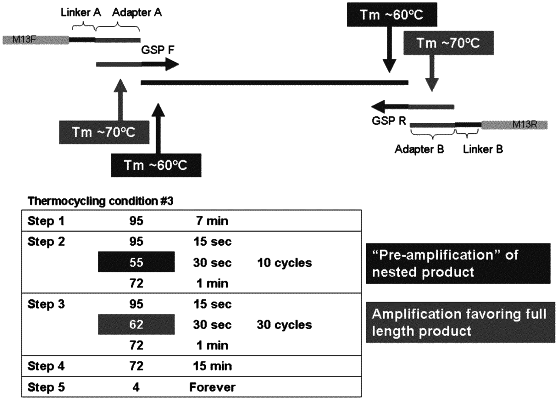| CPC C12Q 1/6806 (2013.01) [C12Q 1/6869 (2013.01); C12Q 1/6876 (2013.01); C12Q 2600/16 (2013.01)] | 9 Claims |

|
1. A method of generating an amplicon for next generation sequencing (NSG) for at least one region of interest comprising:
(a) adding to a sample of DNA:
(i) a first primer set specific for the region of interest consisting of two primers each comprising a 5′ region encoding an adapter and a 3′ region specific for the region of interest, wherein the first primer set binds with a Tm of about 60° C. immediately upstream and downstream of the region of interest; and
(ii) a second primer set consisting of two primers each of which comprises:
(A) a 5′ sequence selected from GTAAAACGACGGCCAGT (SEQ ID NO: 1) or AACAGCTATGACCATG (SEQ ID NO: 2);
(B) a spacer comprising at least 10 nucleotides; and
(C) a 3′ adapter that is substantially identical to the adaptor region,
wherein the adapter has a Tm of about 55° C. and the second primer set has a Tm of at least 70° C.; and
(b) performing a plurality of PCR cycles with a first annealing temperature and a second annealing temperature.
|